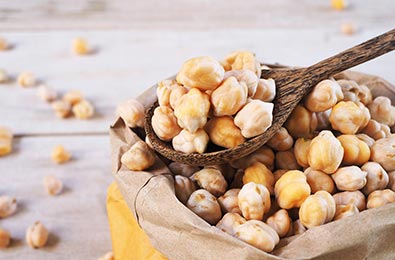Healthy eating means carbohydrate awareness
April 18, 2018
Caryl Inglis, RDN, LDN, CDE is a Registered Dietitian and Certified Diabetes Educator at Northwest Community Healthcare.

The month of April is National Defeat Diabetes Month, and we’re springing into healthy eating habits and focusing on managing diet with better awareness about carbohydrates.
Carbs provide energy as part of a healthy diet. They turn into sugar in your bloodstream and eating too many carbs can cause blood sugars to rise too much without exercise or adequate medication to control blood sugar. Carbohydrate foods include fruits and juices, milk and yogurt, starches and grains, starchy vegetables and sugar-sweetened foods.
Our Best Eating Plan for people with diabetes gives you the tools you need for healthy eating – whether or not you have diabetes. Caryl Inglis works at Diabetes Services and at the Center for Advanced Heart Care at Northwest Community Healthcare (NCH) and offers these healthy tips:
- Try several small meals throughout the day – three meals and three snacks – so that you’re spreading your carbohydrate intake out throughout the day for better energy and blood sugars.
- Eat adequate lean protein: have a small amount at breakfast and then 3-4 ounces each at lunch and dinner. Include lowfat or fat-free dairy as protein sources also.
- Eat whole fruit rather than juice. The fiber fills you up and you end up eating fewer calories and carbs.
- Try legumes like black beans or chickpeas (see recipe below). They provide protein and good fiber as well as carbohydrate. Hummus paired with low carb veggies can make a healthy snack or appetizer.
- Eat plenty of crunchy and colorful low-carb vegetables, including broccoli, zucchini, green beans and carrots. Yes, carrots are all right if you have diabetes. This group has a lot of fiber and water for fullness, not to mention the vitamins and minerals.
- Choose whole grains such as brown rice, whole wheat bread, quinoa and oatmeal. Limit most instant oatmeal due to its high sugar/carbohydrate content. “If you choose instant oatmeal, there are plain ones,” Inglis says. Or you can cook quick or old-fashioned oatmeal in the microwave. “You can add some Splenda, Stevia or have a fruit serving in it to sweeten it up.”
- Limit carbohydrates. “When you have diabetes, you need to limit your carbohydrates, but especially those simple sugars like jams, jellies and syrups.” Use these foods sparingly since they count as carbohydrate choices in the same way that an entire piece of fruit or slice of bread count. “You get fewer things to chew and less fiber if you regularly make your carbohydrate choices from foods containing simple sugars, like syrup and jam,” Inglis says. Choose a low-sugar fruit spread if you need a sweet flavor. For example, have a slice of whole wheat toast with a low-sugar spread, light butter spread, peanut butter or avocado slices rather than a tablespoon of jelly.
- Keep simple sugars like granola bars or cookies to only one carb choice or less in a day. One carb choice would be between 15-20 grams of carbohydrate on the nutrition label.
- Carefully choose your added fat servings, favoring nuts, seeds and liquid oils (unsaturated fats) rather than sour cream, bacon, or coconut oil (saturated fats).
- Don’t go hungry to a party, and don’t stand near the buffet table, Inglis recommends. Have some protein and low carb vegetables and choose your carbs carefully. “If you want to eat some birthday cake, split a small piece with somebody,” she says.
NCH offers a Diabetes Education and Support Group on the second Tuesday of each month at the Arlington Heights Senior Center. The group is for those who have Diabetes or Pre-diabetes, or are trying to prevent developing them. No registration is needed and walk-ins are welcome.
Lemony Chickpea Salad
Courtesy of Sodexo at NCH
Servings: 6
Serving size: 3 ounces
Prep time: 15 mins
Calories 110
Total fat 4.5g
Sodium 95mg
Carbohydrate 14g
Fiber 4g
Sugar 1g
Protein 5g
Ingredients
- 16 ounce can low sodium garbanzo beans
- ½ cup diced red peppers
- 1 ¼ tbsp chopped parsley
- 2 ½ tsp lemon zest
- 2 tbsp lemon juice
- 2 tbsp olive oil
- 1/8 tsp salt
- ¼ tsp black pepper
Directions
- Drain and rinse garbanzo beans.
- In a large bowl, combine beans and all other ingredients.
- Toss to combine. Place in a serving bowl and enjoy!